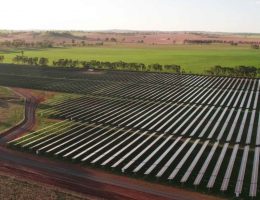A new report from the Clean Energy Regulator has shed new light into the emerging market for carbon abatement in Australia, as market insiders warn that the Morrison government will need to paying much more for future emissions reductions.
In a new report on the state of Australia’s carbon and environmental markets, the Clean Energy Regulator has detailed the history of the Emissions Reduction Fund, a carbon market administered by the Clean Energy Regulator through the issuance of Australian Carbon Credit Units (ACCUs).
The primary purchaser of ACCUs has been the Federal government, after the then Abbott government initiated the “Direct Action Plan”, which saw the carbon price scraped, and replaced with a program whereby the government directly purchased emissions abatement.
To date, most abatement recognised under the program has been issued to vegetation projects, including avoided deforestation projects and plantations.
In February, the Morrison government allocated an additional $2 billion to purchase around 100 million tonnes of abatement through to 2030. The government, however, has struggled to find abatement to purchase, due to a reluctance to pay much more than $15 per tonne for abatement under the program.
After a series of comparatively successful auctions in the early years of the scheme, the government appears to have exhausted the supply of cheap carbon abatement. The most recent auction, held in June this year, was a disaster for the Morrison government, netting just 59,000 tonnes of abatement.

The Emissions Reduction Fund, to be rebranded as the Climate Solutions Fund, represents the bulk of federal government action to reduce emissions, with the government purchasing emissions reductions under the scheme.
Both the Regulator, and Federal energy minister Angus Taylor, tried to shift the blame for the poor result, saying it was due to a timing clash with the Federal election.
However, RenewEconomy has been told by industry participants that the election would only have had a minor impact on the auction result and that a price cap imposed by the Regulator was likely to be the key reason so little abatement was purchased at the auction.
“This auction cycle ran over the election period – Labor took a policy of abolishing the ERF to the election, which constrained project development and auction registration,” Taylor said.
The Regulator said that the election timing had “temporarily suppressed” the supply of abatement available to purchase.
“We have a statutory duty to purchase abatement at the lowest cost,” the Regulator said in the carbon market report.
“In practice, this means we will buy up the long run supply curve and the price is likely to rise somewhat over time as it did at auction nine. However, it is not the role of the agency to buy up the short run supply curve, when it appears that abatement supply is temporarily suppressed.”
“But it is not my job to buy up the short-run supply curve. I won’t chase small amounts of abatement at high prices when supply has been temporarily suppressed. The election period was in the middle of the auction process and it looks like this reduced quantities that were bid into the auction,” CEO and Chair of the CER David Parker told RenewEconomy.
However, carbon market insiders have also told RenewEconomy that ample supply of abatement is available to the regulator, but it will need to meet the price necessary to make the projects viable, which could be as much as $20 per tonne.
Recently, ACCU prices have nudged above $16 per tonne, and are expected to increase reflecting the growing scarcity of supply, as the cheapest sources of abatement are used up.
To date, around 200 million tonnes of abatement have been contracted under the Emissions Reduction Fund, set to be delivered over the 15-years between 2015 and 2030.
Market advisory firm Reputex warned as much back in March, before the auction was held, that the Clean Energy Regulator’s approach to the Emissions Reductions Fund auctions would lead to a ‘collapse’ in the amount of abatement purchased as the Regulator would be scraping the bottom of the barrel of cheap abatement.
“The success of the government’s ERF/CSF scheme – and future ACCU price dynamics – rests with the Regulator, with the continued deployment of a low contract price cap likely to continue to limit abatement contracting, while the more efficient deployment of a higher price cap may unlock higher abatement levels, and better support Australia’s longer term emissions reduction target,” Reputex said.
“Should the Regulator ease restrictions on the participation of higher cost abatement – allowing contract prices to rise toward $20 per tonne – modelling indicates that the handbrake on ERF contracting would be released.”
Unless the Regulator changes its stance, and becomes open to paying higher prices for carbon abatement, serious questions remain over the ability of the Morrison government to deliver on the additional 100 million tonnes of carbon abatement expected of the Climate Solutions Fund.
While Australia currently lacks a dedicated carbon pricing mechanism, there is a small and emerging market for carbon abatement, that has grown to become a multi-billion market for environmental units.
A small volume of ACCUs has also been used under the Safeguard mechanism, imposed on industrial emitters, but excluding the electricity sector. However, due to the fairly relaxed nature of the Safeguard Mechanism, that imposes a relatively ineffective “cap” on industrial emissions, demand for ACCU abatement under that program has been low.
Former Origin Energy CEO and president of the Business Council of Australia Grant King was appointed to an “expert panel” to find additional sources of abatement under the Climate Solutions Fund, but little is publicly known about the review or its terms of reference.
The Clean Energy Regulator expects to run the next emissions abatement auction in March 2020.












